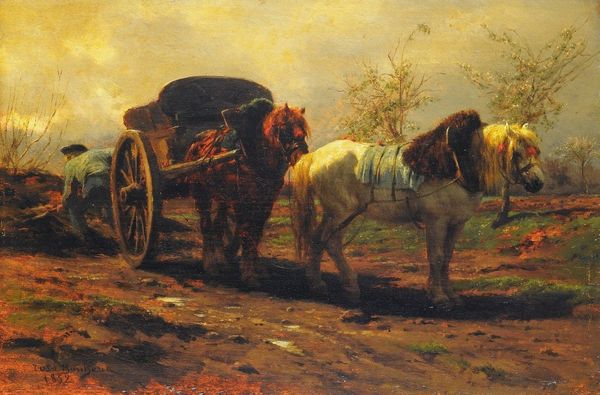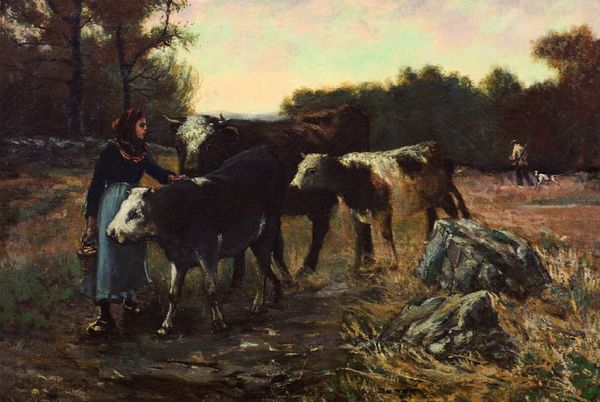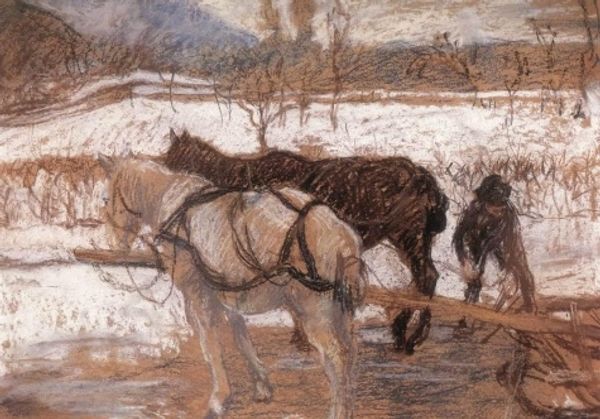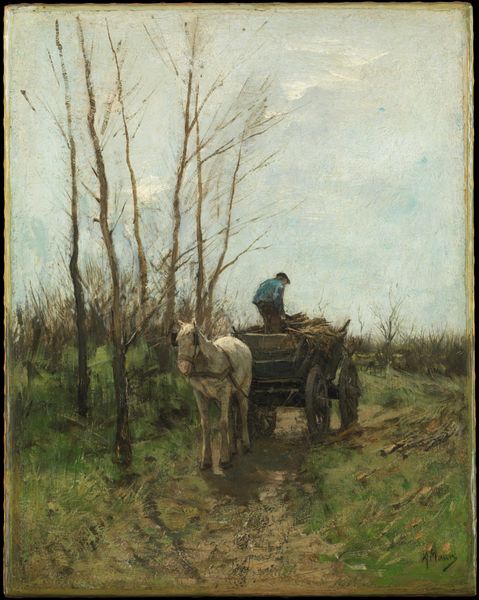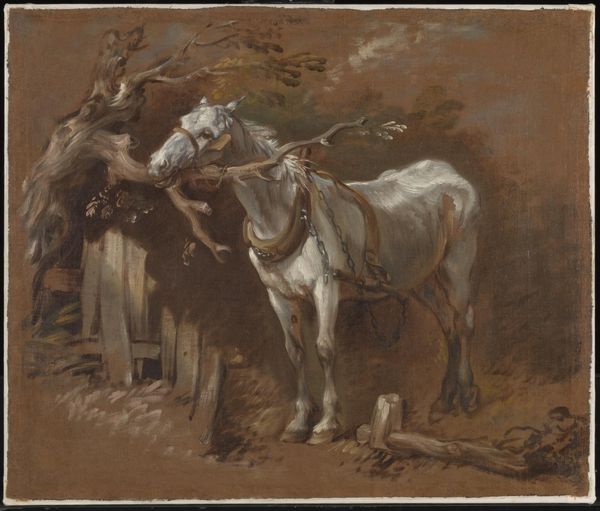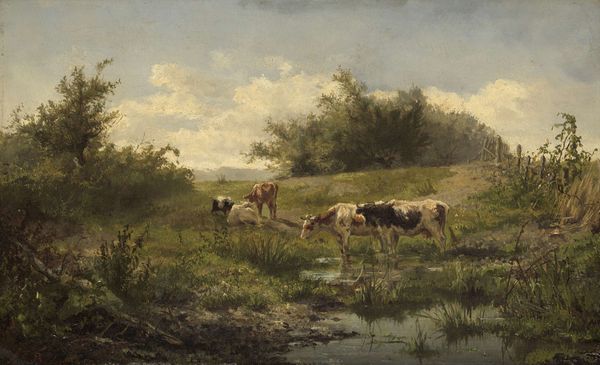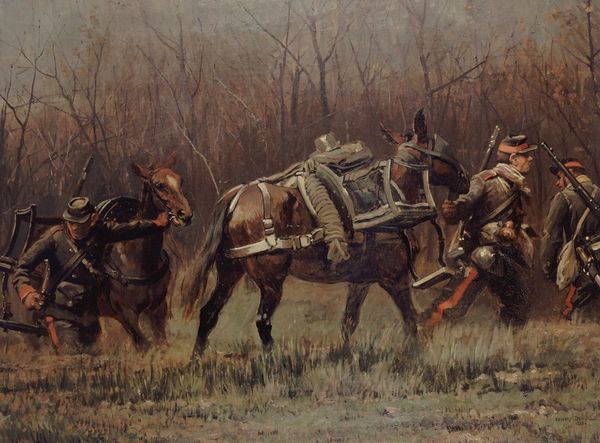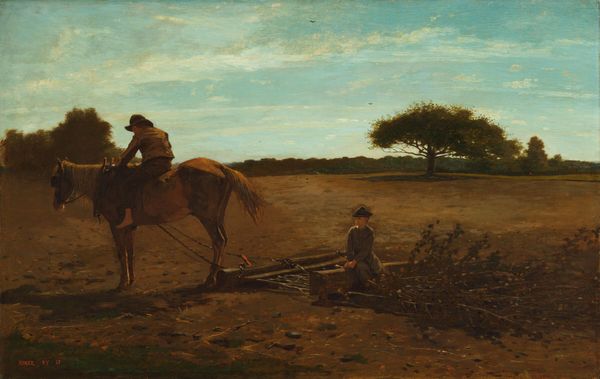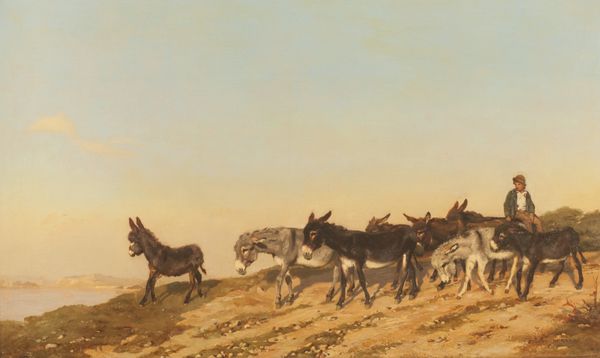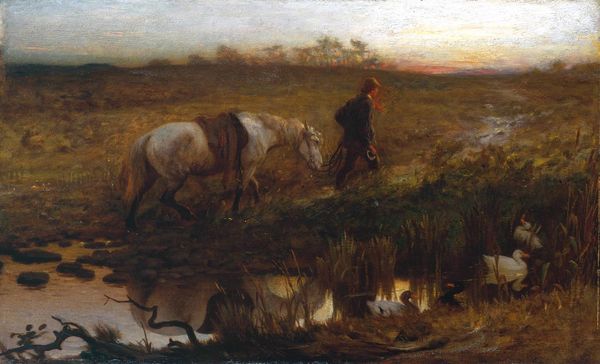
painting, plein-air, oil-paint, impasto
#
animal
#
painting
#
countryside
#
plein-air
#
oil-paint
#
landscape
#
nature
#
impasto
#
romanticism
#
genre-painting
#
realism
Copyright: Public Domain: Artvee
Curator: Here we have a fascinating landscape. Although it has no confirmed creation date, the work, called "Charrette Attelée D’un Cheval Blanc," meaning "Cart Attached to a White Horse," is credited to Jean-Baptiste Édouard Detaille. Editor: My first thought is somber. It feels like twilight, doesn't it? That lone, greyish-white horse hitched to the aged wooden cart... The color palette itself suggests fatigue. Curator: It certainly evokes a sense of quiet labor and perhaps the stark realities of rural existence. Notice the subdued tones; Detaille really uses light and shadow here to build that mood, while engaging with ideas of the picturesque. Consider, too, the power dynamics implicit in human-animal relationships and historical depictions of work. Who bears the true weight, so to speak? Editor: Yes, and the horse, head bowed... is a visual echo of humility and service across centuries. In some traditions, white horses signify purity and nobility, though that’s clearly been worn away here by its use in the fields. Is this a subversion? Perhaps an unveiling of life's harder aspects? Curator: Possibly. This image prompts us to question romantic ideals of labor while celebrating pastoral themes of that era, while at the same time remaining somewhat opaque on how to challenge those values directly. Is Detaille commenting on the burdens faced by working-class communities, or is he simply composing a visually compelling tableau? How complicit are paintings like this in romanticizing the harsh realities of these workers' lives, without offering genuine commentary on their material conditions? Editor: It leaves one to ponder what exactly constitutes ‘truth’ within art, wouldn't you say? Regardless, it stirs potent associations, prompting one to acknowledge both inherent beauty and embedded hardship simultaneously. The symbol of the horse carries through—enduring power, yet bound to serve. Curator: I agree. Its beauty lies not only in aesthetic pleasure, but in challenging us to contemplate broader socio-economic dimensions, as well as these creatures' long histories as work animals. Editor: Indeed. It's a muted reflection, resonant long after we move on to the next piece.
Comments
No comments
Be the first to comment and join the conversation on the ultimate creative platform.
